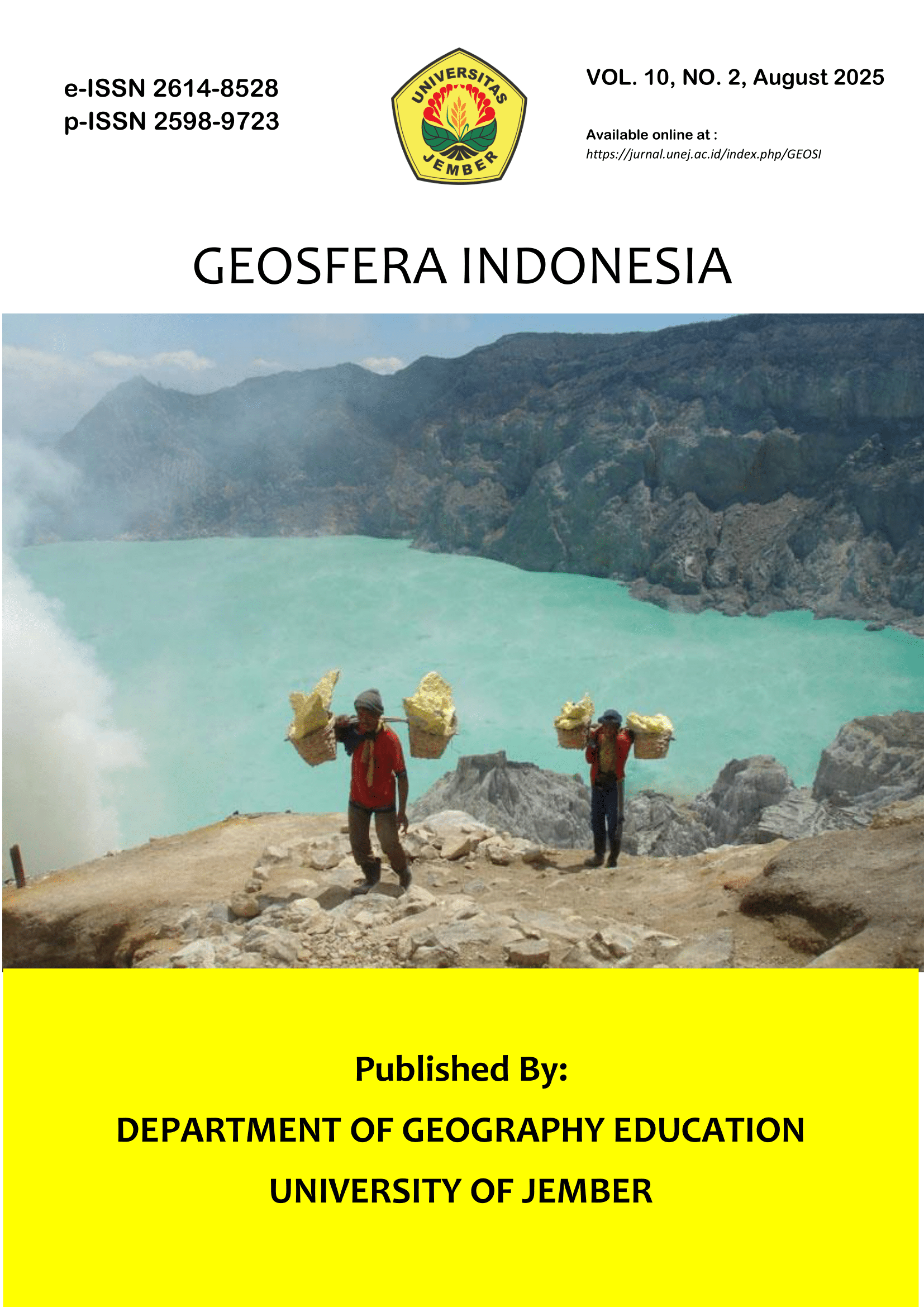An Assessment of the Trend and Periodicity of Fire Disasters in Sokoto Metropolis, in Nigeria
DOI:
https://doi.org/10.19184/geosi.v10i2.48998Keywords:
Emergency, Fire Disaster, Trend, Period and Climatic VaraiblesAbstract
Global trends indicate that both natural and man-made disasters are on the increase and more people are being affected. This study assessed the trend and monthly distribution of fire disasters in the Sokoto metropolis. Data on monthly records were collected from the Sokoto State Fire Service Department for 2000-2023. Monthly meteorological data for wind speed, sunshine maximum and minimum temperature were collected from the Nigerian Meteorological Agency (NIMET) spanning the period of 2000-2023. Trends were calculated using the Mann-Kendall test. Also, multiple linear regression was used to examine the contribution of weather variables to fire disasters. Results revealed and upward trend. The fire frequency is surging on a trend with positive both monthly and annually. The magnitude of the trend produced statistical P-values of 0.000 for January, February and March while P-values of <0.0001 were observed on an annual basis. The findings revealed that the critical time for fire incidences are afternoon hours. The result indicates that February March, January and December constitute the fire disaster-prone period and correspond to the cold dry and hot dry months in the area. Also, maximum temperature accounts for (R2 =0.049), minimum temperature (R2= 0.103), wind speed (R2= 0.004) and Sunshine hours accounted for about (R2= 0.017). There is a need to educate and sensitise the residents through mobile telephony, radio and television broadcasts on the high-risk months identified. Additional fire stations in cluster patterns of distribution should be set up and more fire-fighting personnel should be recruited.
Downloads
Published
How to Cite
Issue
Section
License
Copyright (c) 2025 Geosfera Indonesia

This work is licensed under a Creative Commons Attribution-ShareAlike 4.0 International License.




